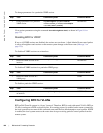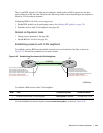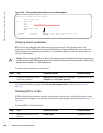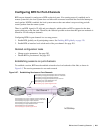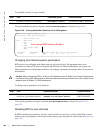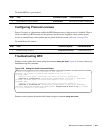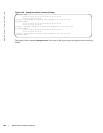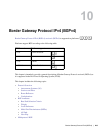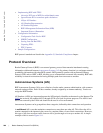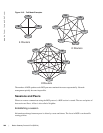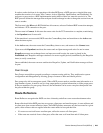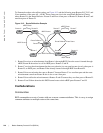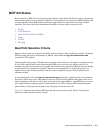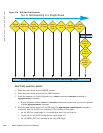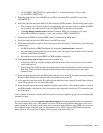
206 | Border Gateway Protocol IPv4 (BGPv4)
www.dell.com | support.dell.com
• Implementing BGP with FTOS
• Advertise IGP cost as MED for redistributed routes
• Ignore Router-ID for some best-path calculations
• 4-Byte AS Numbers
• AS4 Number Representation
• AS Number Migration
• BGP4 Management Information Base (MIB)
• Important Points to Remember
• Configuration Information
• Configuration Task List for BGP
• MBGP Configuration
• Storing Last and Bad PDUs
• Capturing PDUs
• PDU Counters
• Sample Configurations
BGP protocol standards are listed in the Appendix 63, Standards Compliance chapter.
Protocol Overview
Border Gateway Protocol (BGP) is an external gateway protocol that transmits interdomain routing
information within and between Autonomous Systems (AS). Its primary function is to exchange network
reachability information with other BGP systems. BGP generally operates with an Internal Gateway
Protocol (IGP) such as OSPF or RIP, allowing you to communicate to external ASs smoothly. BGP adds
reliability to network connections be having multiple paths from one router to another.
Autonomous Systems (AS)
BGP Autonomous Systems (ASs) are a collection of nodes under common administration, with common
network routing policies. Each AS has a number, already assigned by an internet authority. You do not
assign the BGP number.
AS Numbers (ASNs) are important because the ASN uniquely identifies each network on the Internet. The
IANA has reserved AS numbers 64512 through 65534 to be used for private purposes. The ASNs 0 and
65535 are reserved by the IANA and should not be used in a live environment.
Autonomous Systems can be grouped into three categories, defined by their connections and operation.
A multihomed AS is one that maintains connections to more than one other AS. This allows the AS to
remain connected to the internet in the event of a complete failure of one of their connections. However,
this type of AS does not allow traffic from one AS to pass through on its way to another AS. A simple
example of this is seen in Figure 10-1.



